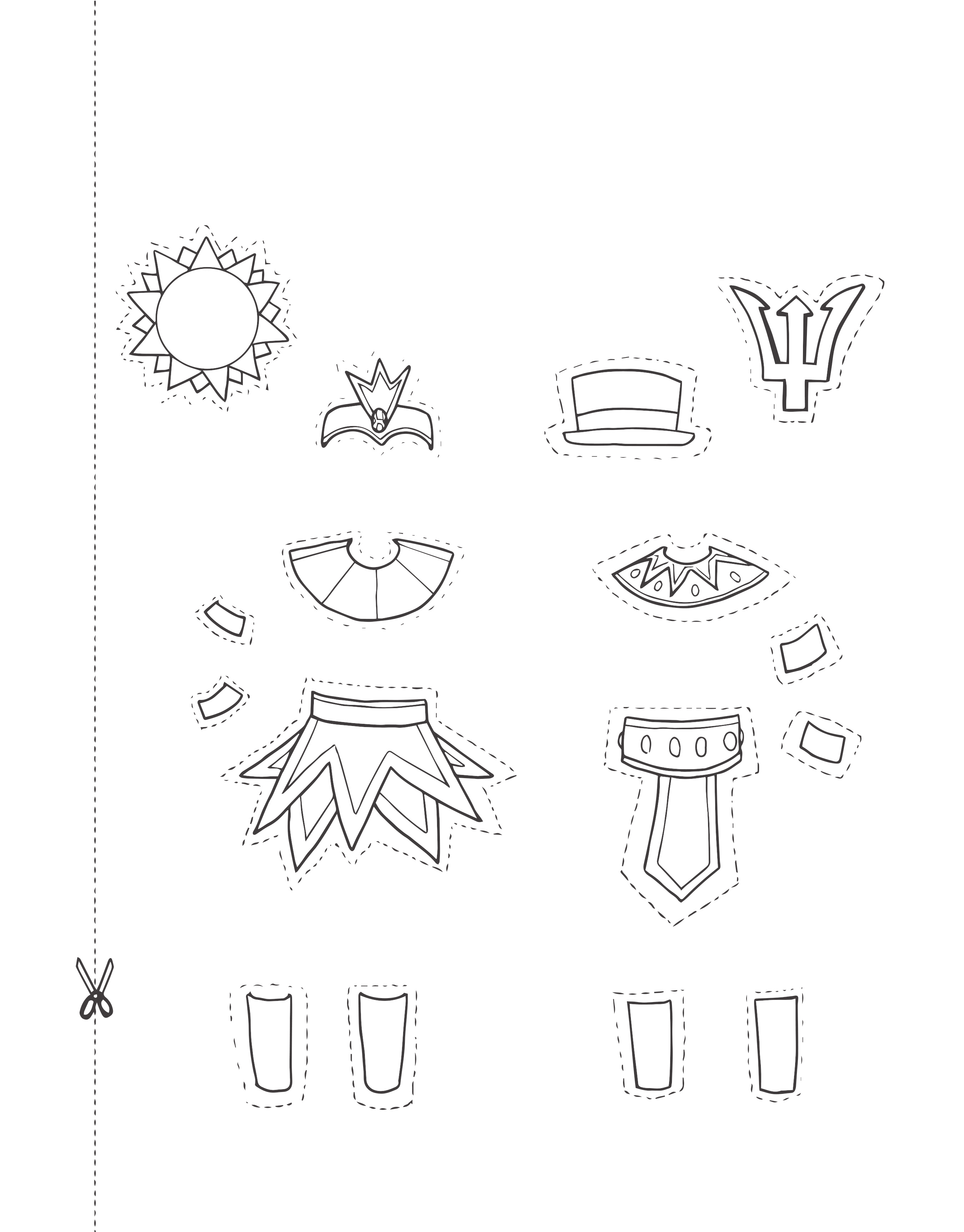The MillYard
Long ago, there were many plantations in Barbados: at one time there were almost 500 mills scattered across the island!
Can you spot 5 differences between the two mill yards?
This is the first in the series produced in 2019. Beautifully illustrated by Cherise Harris and written by Chief Cultural Officer, Andrea Wells and Research Officer, Michelle Springer, the activity book highlights topics and themes associated generally with the Crop Over Festival including historical tidbits on the Festival, the Sugar Industry and its Workers, Barbadian folk characters; the Barbados Landship and Tuk Music, the National Costume and Steel Pan. Also included are word searches; paper doll cut-outs; and dot-to-dot drawings, all featuring the themes relating to the Crop Over Festival.

Long ago, there were many plantations in Barbados: at one time there were almost 500 mills scattered across the island!
Can you spot 5 differences between the two mill yards?
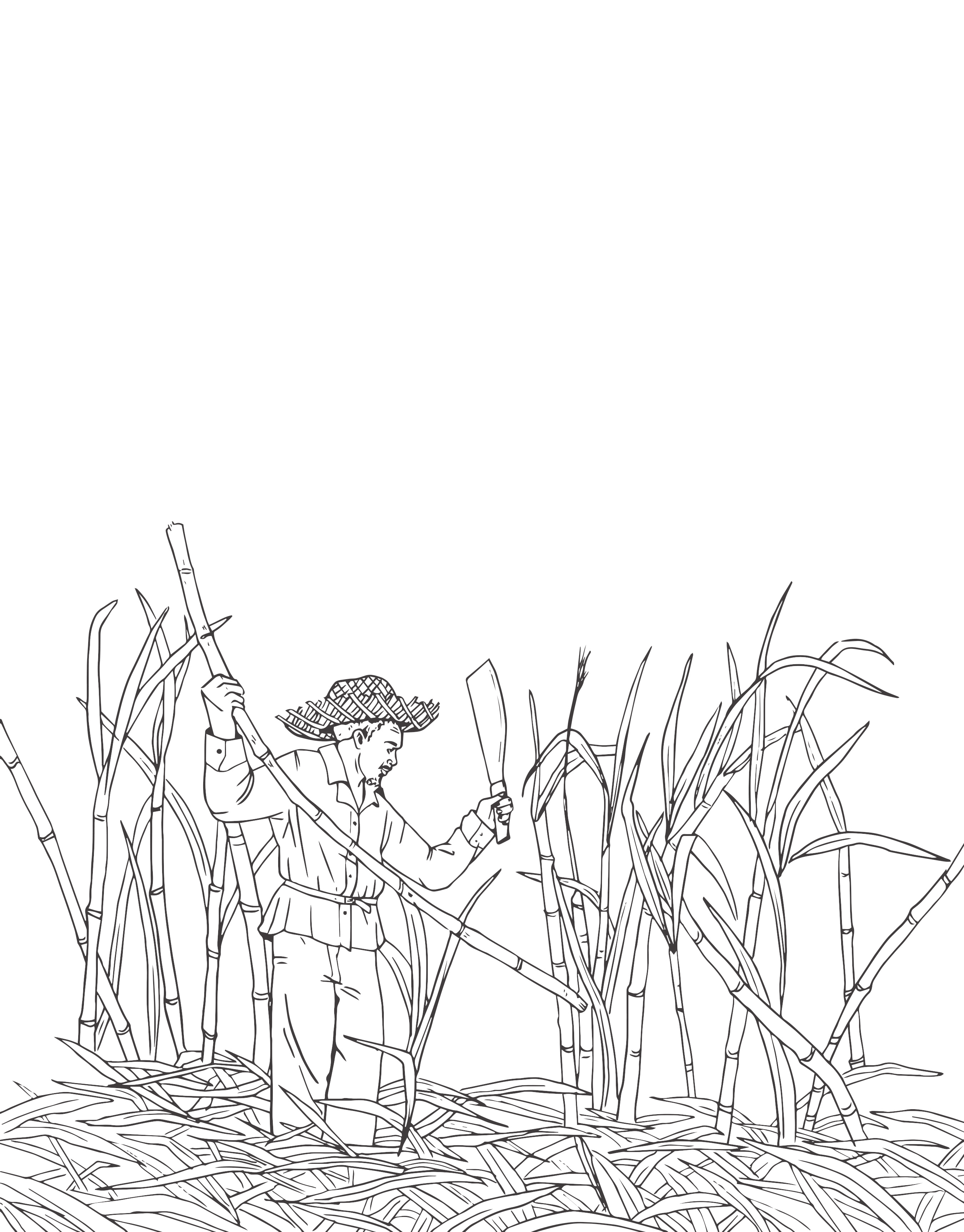
Africans were forced to come to places like Barbados and the Caribbean to cut cane under very harsh conditions in the 1600s. After slavery many poor Barbadians, mainly relatives of these Africans, had to continue working in the fields to support their families.
Can you name two jobs of the past that hardly anyone does anymore?
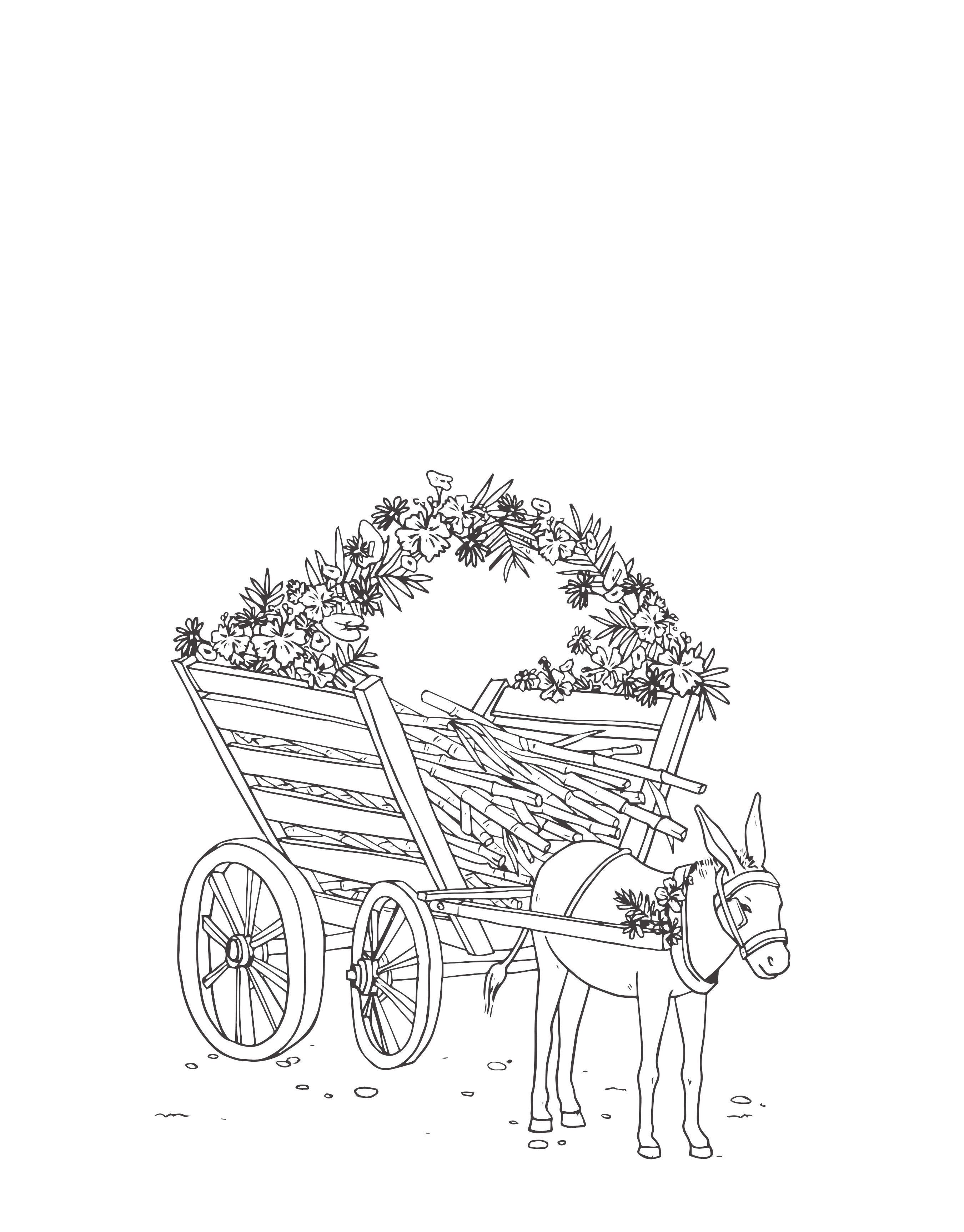
The dray-cart was usually attached to a donkey or mule and used to transport the cane cut by the workers back into the mill-yard. On the day of the Crop Over celebrations dray carts were dressed up with pretty flowers and the workers came out to sing, dance and make merry. Today we celebrate this event with the Ceremonial Delivery of the Last Canes, which starts the national Crop Over celebrations.
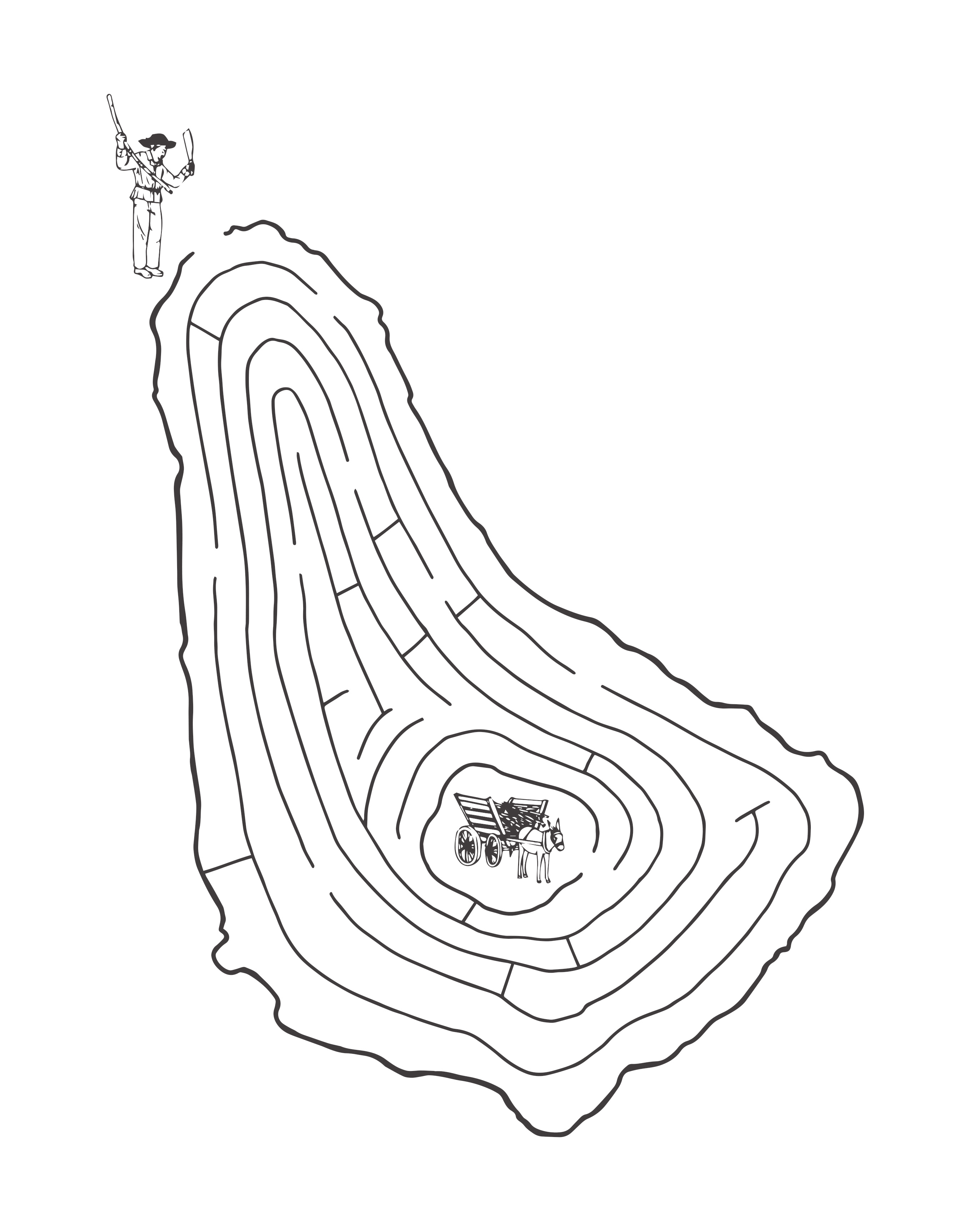
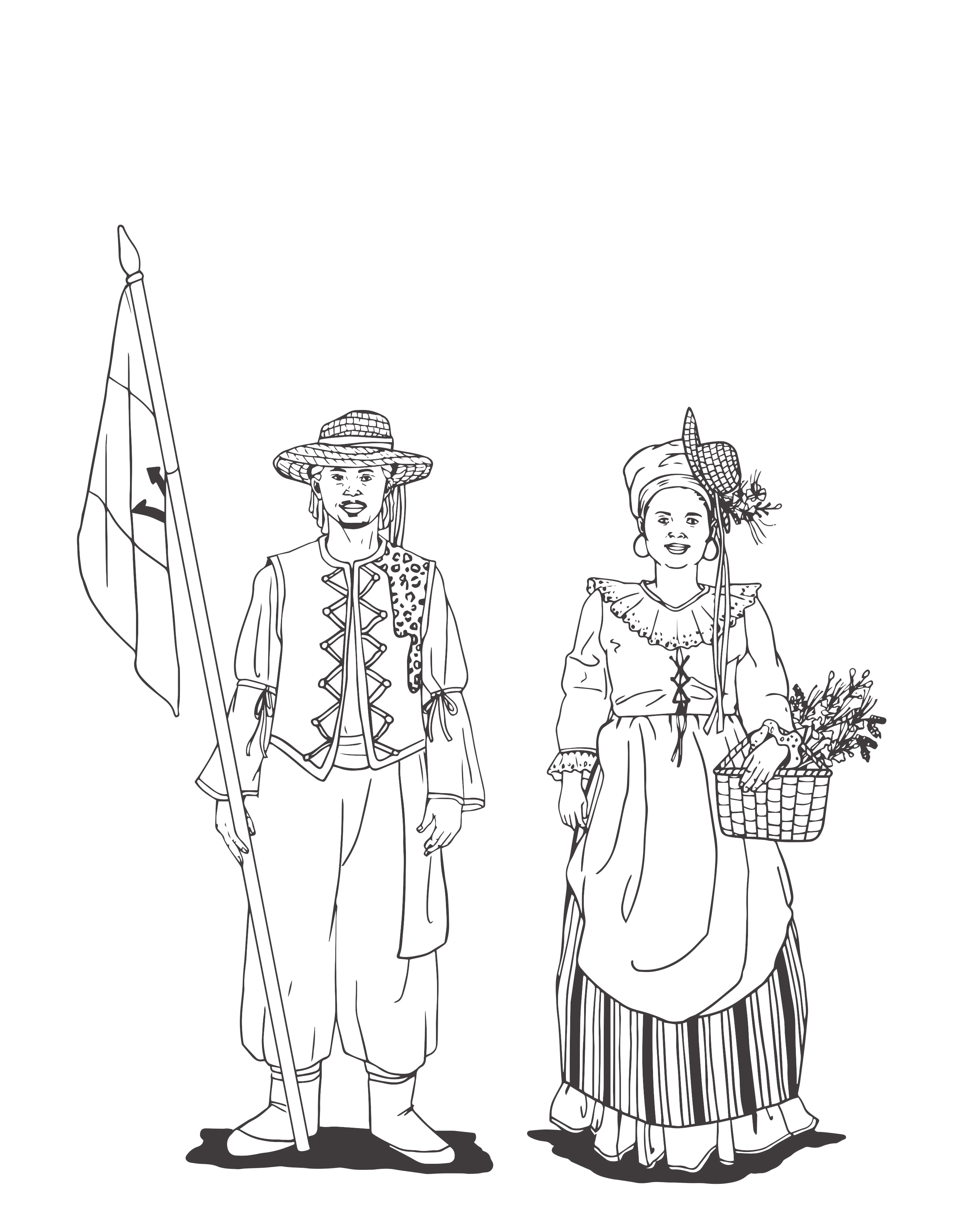
The top cane-cutter and cane-piler of the crop season were crowned the King and Queen of the Crop. They wore the national dress at fancy dressed-up occasions.
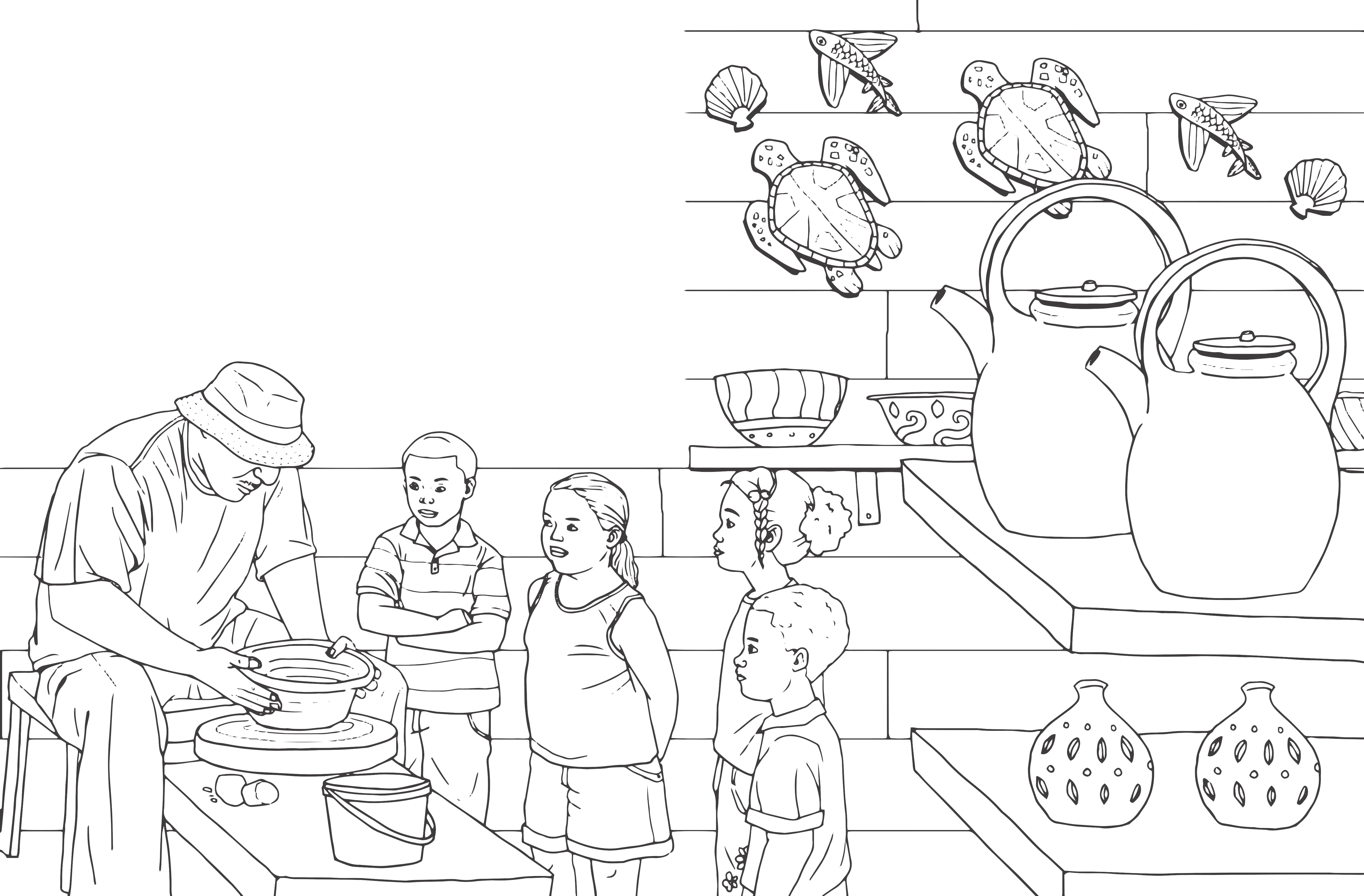
Once upon a time, pottery was very popular on the island. Many Barbadians, or Bajans as we say, made a living from making and selling household wares with clay found in Chalky Mount, St Andrew and surrounding areas.
Do you know the name of the two tall jugs in the drawing? Ask a grown-up to help you.
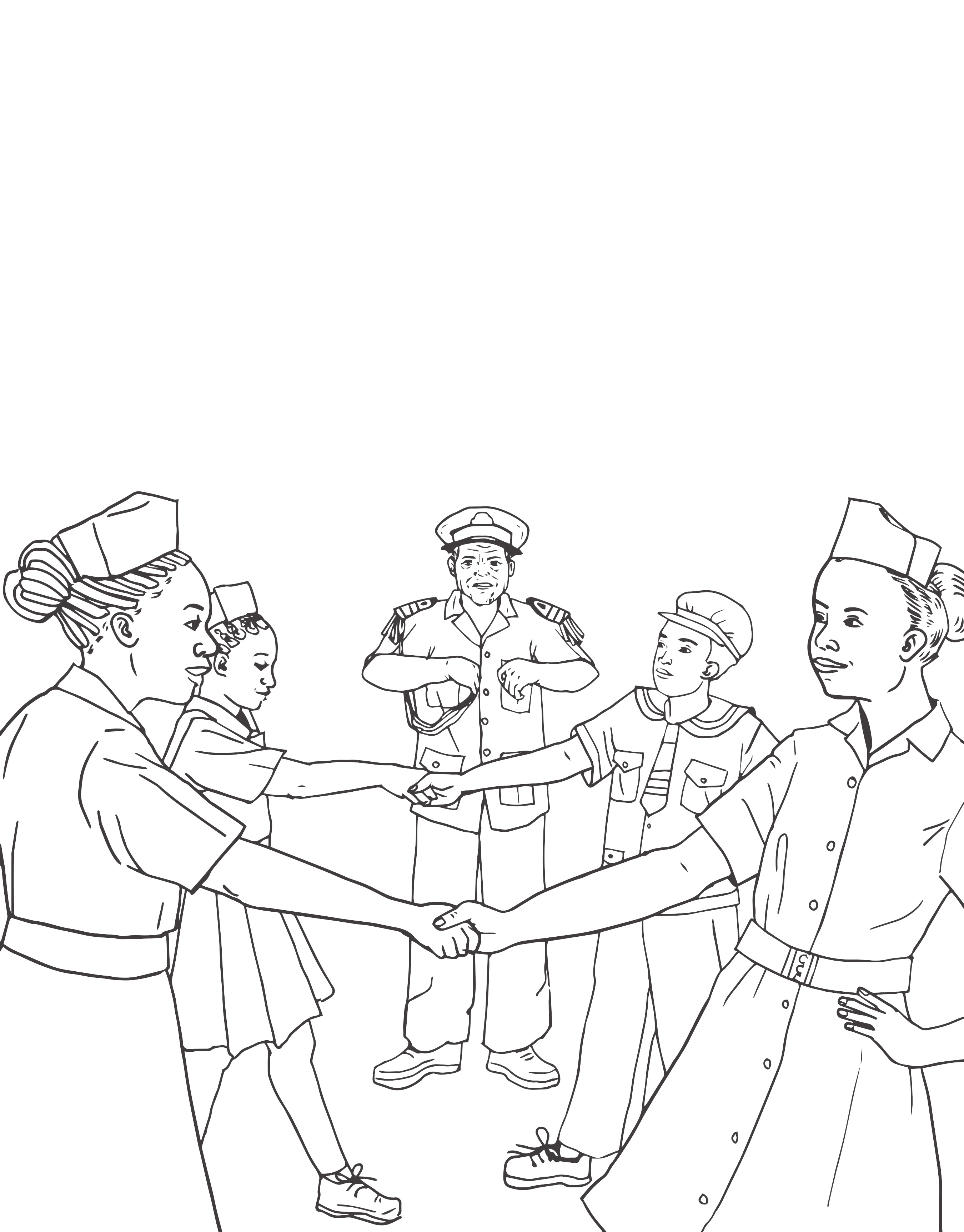
The Barbados Landship is a group that does unique parade dances while dressed as sailors and nurses. But do you know that the Barbados Landship is mainly a social group that helped poor people? Do you know that the dances of the Landship are called manoeuvres?
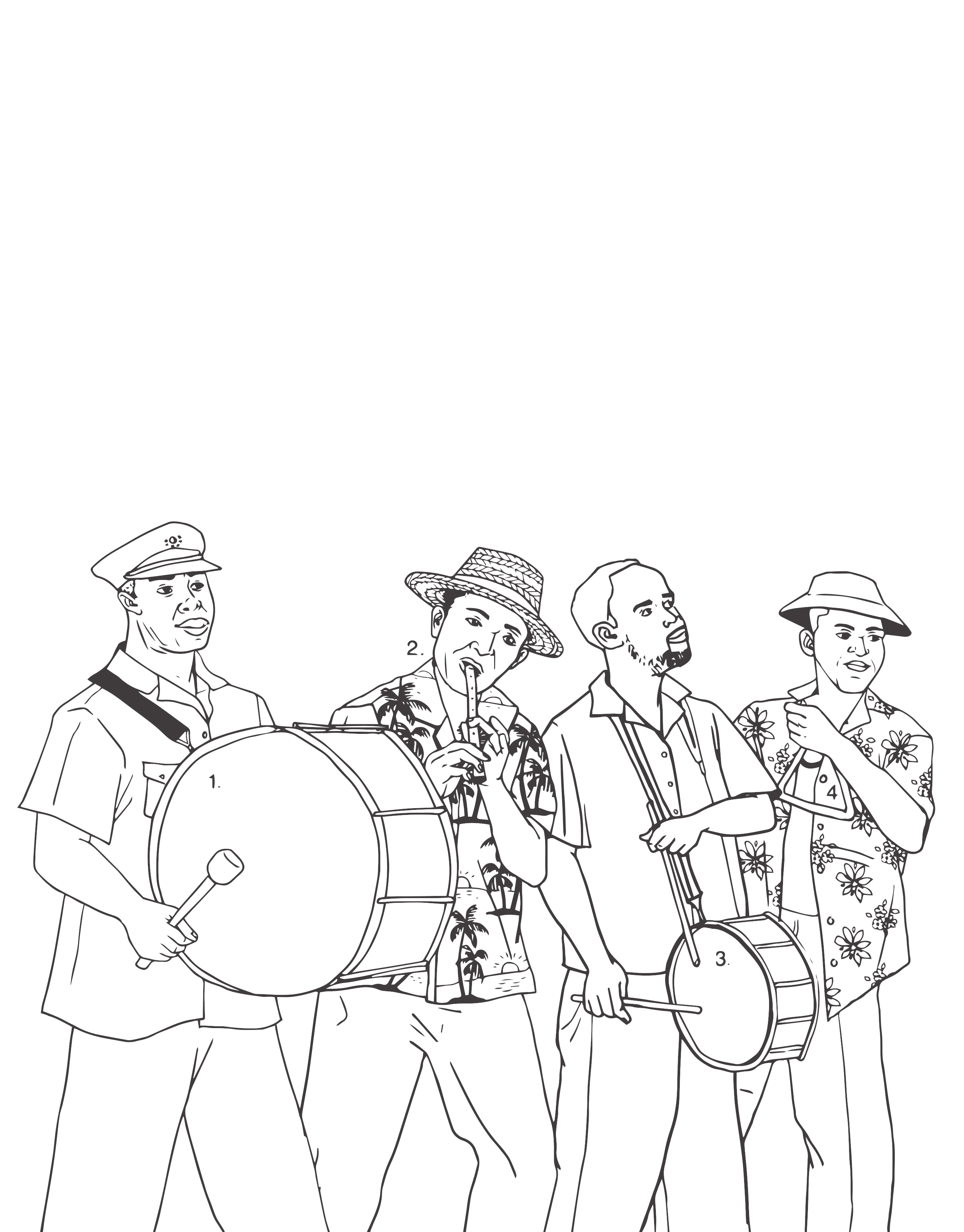
Tuk music evolved from festivities like Crop Over a long time ago. There are three main instruments: the bass drum or bum drum, the penny whistle, and the snare drum. Sometimes there would be other instruments like the triangle. This group is said to be unique to Barbados, although there are similar bands in other Caribbean islands.
Have you ever seen a tuk band perform? If so, where?
Do you know any other musical instruments?
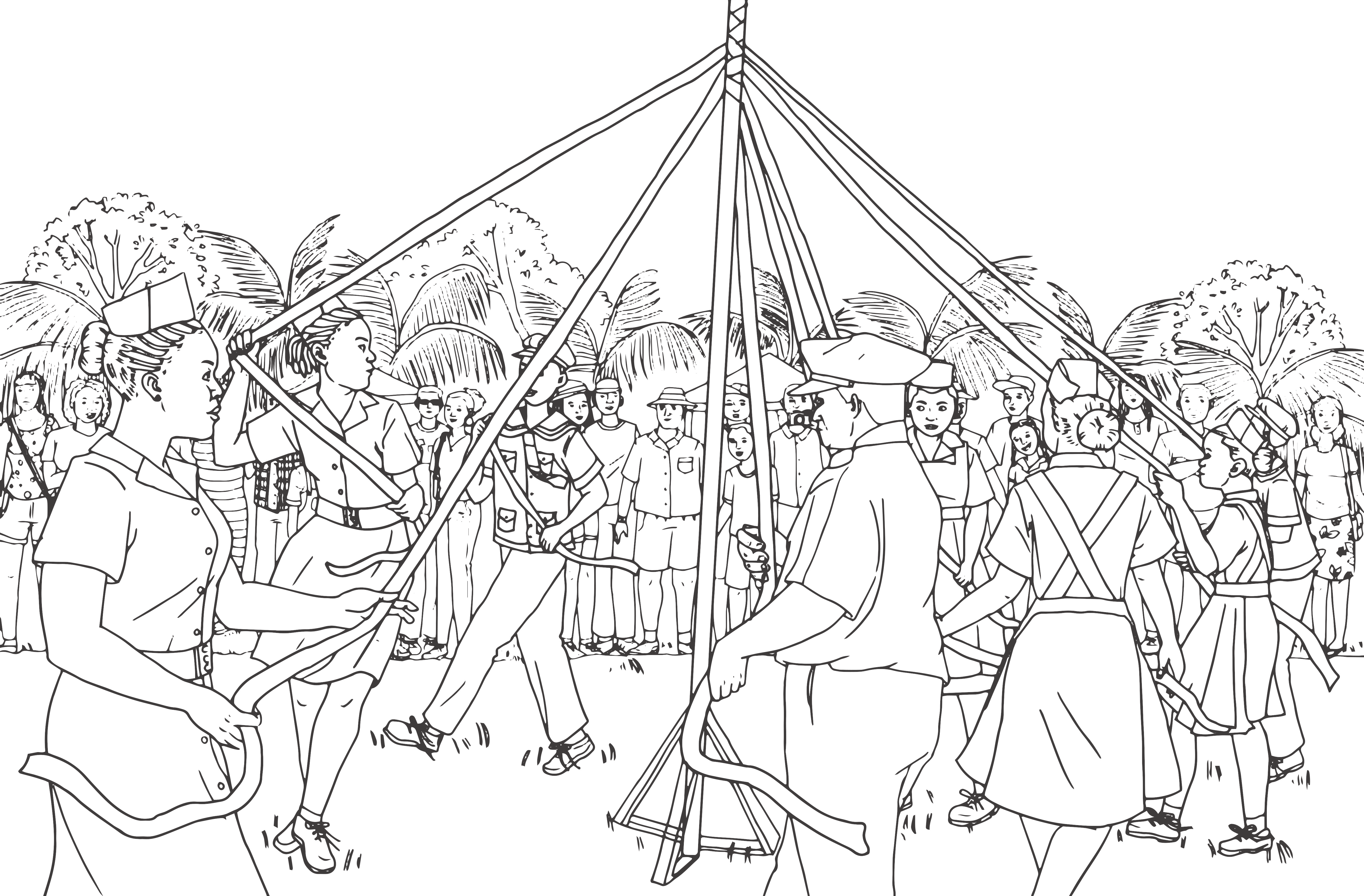
Plaiting the maypole is from both England and African, two of the countries that formed Barbadian culture in the past. It takes great skill and teamwork to braid the brightly coloured ribbons. You will often see the Landship doing maypole dances at cultural events. Maypole dances are also found in Jamaica, Grenada and other parts of the Caribbean. Fill in the blanks to make a word that describes one of the things that maypole dancers must do.
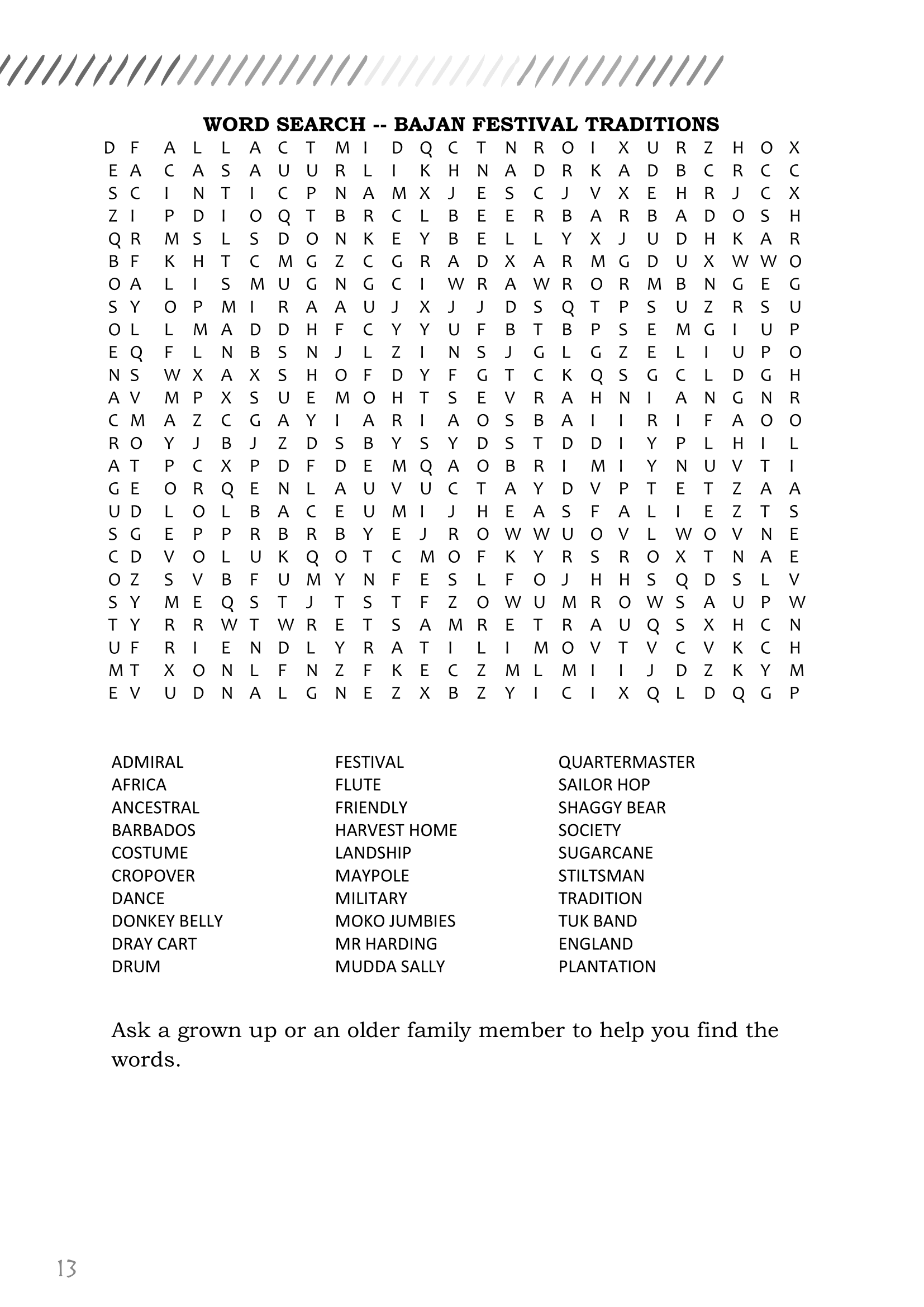
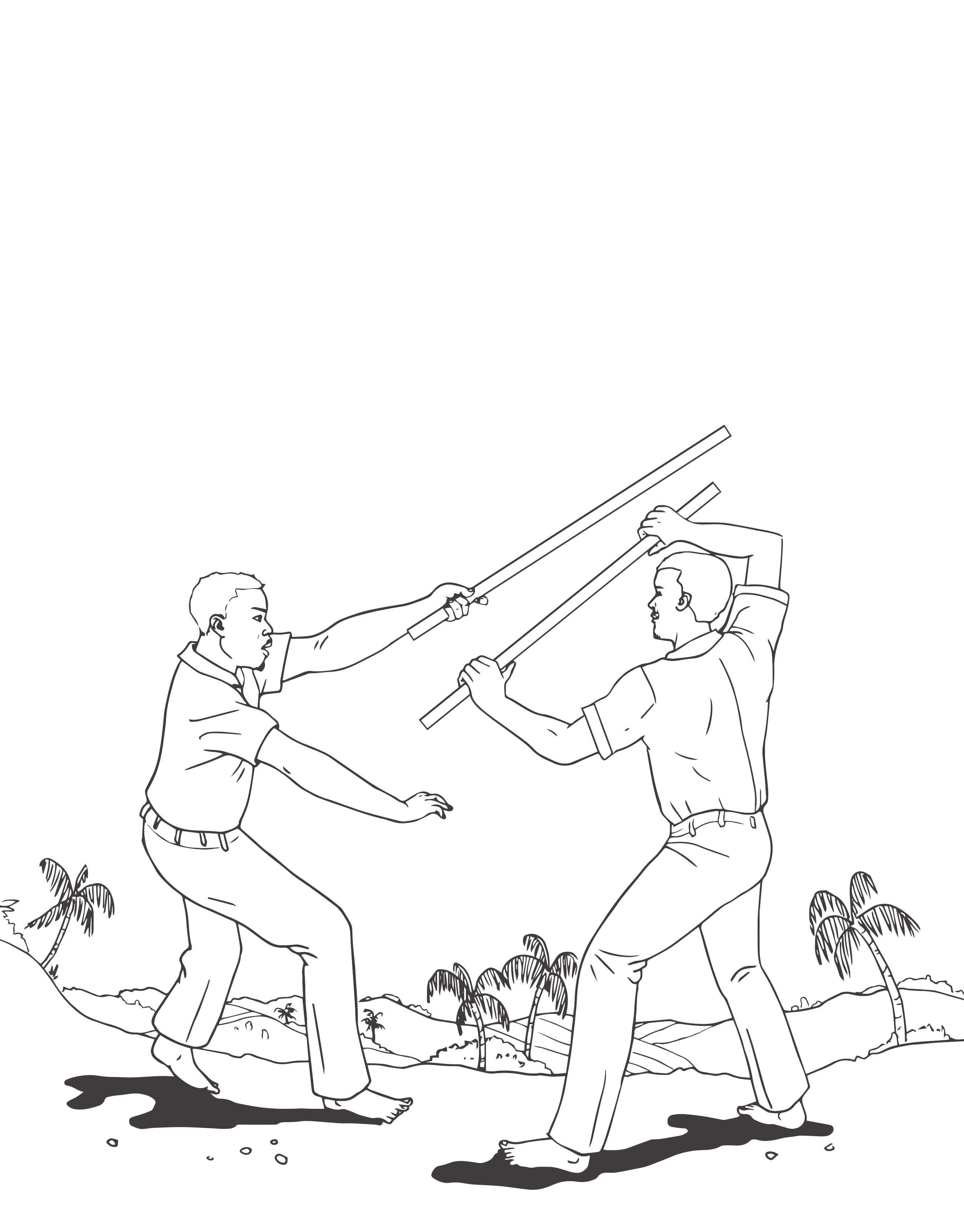
This is an old martial art that came from Africa and is found all around the world. In the past, it was a form of self-defense as well as a sport like karate and judo. There were many contests or seitus (pronounced ‘say-toos’) across the villages to see who was the best sticklicker.

Our folk characters have been with us for centuries, sometimes just in another shape. Most of them were part of West African spiritual practices and survived by taking new forms during the period of enslavement. The Africans had brought their practices with them but had to hide them from "Massa", the plantation owners.
Some believe he represents the donkey-cart mode of transport that was used by locals long ago.
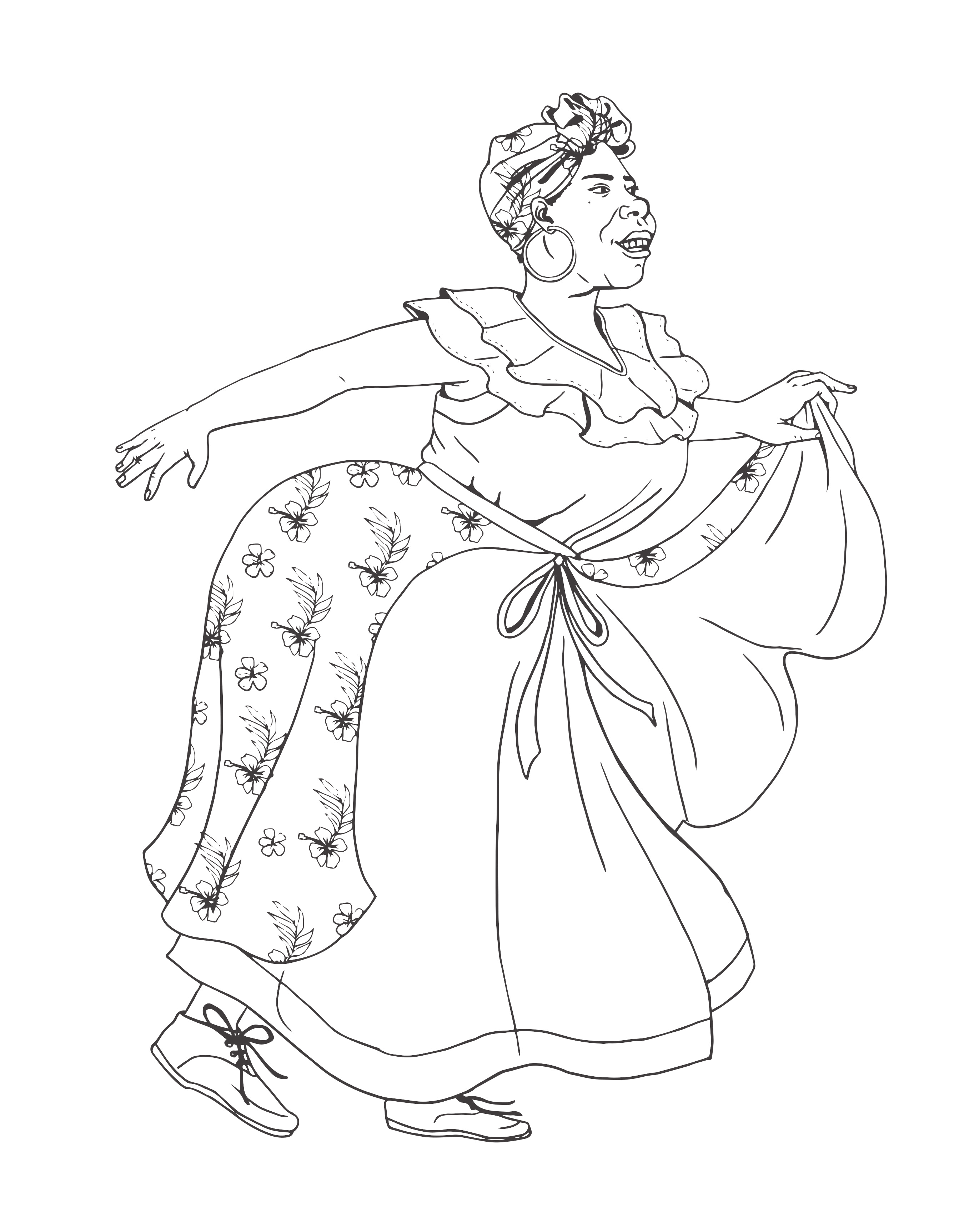
Long ago Muddah Sally or Mother Sally was a man dressed up like a woman with exaggerated bosom and buttocks. Today it is mainly women who play the role. In West Africa this figure is a symbol of fertility and appears in rituals that celebrate women and femininity.
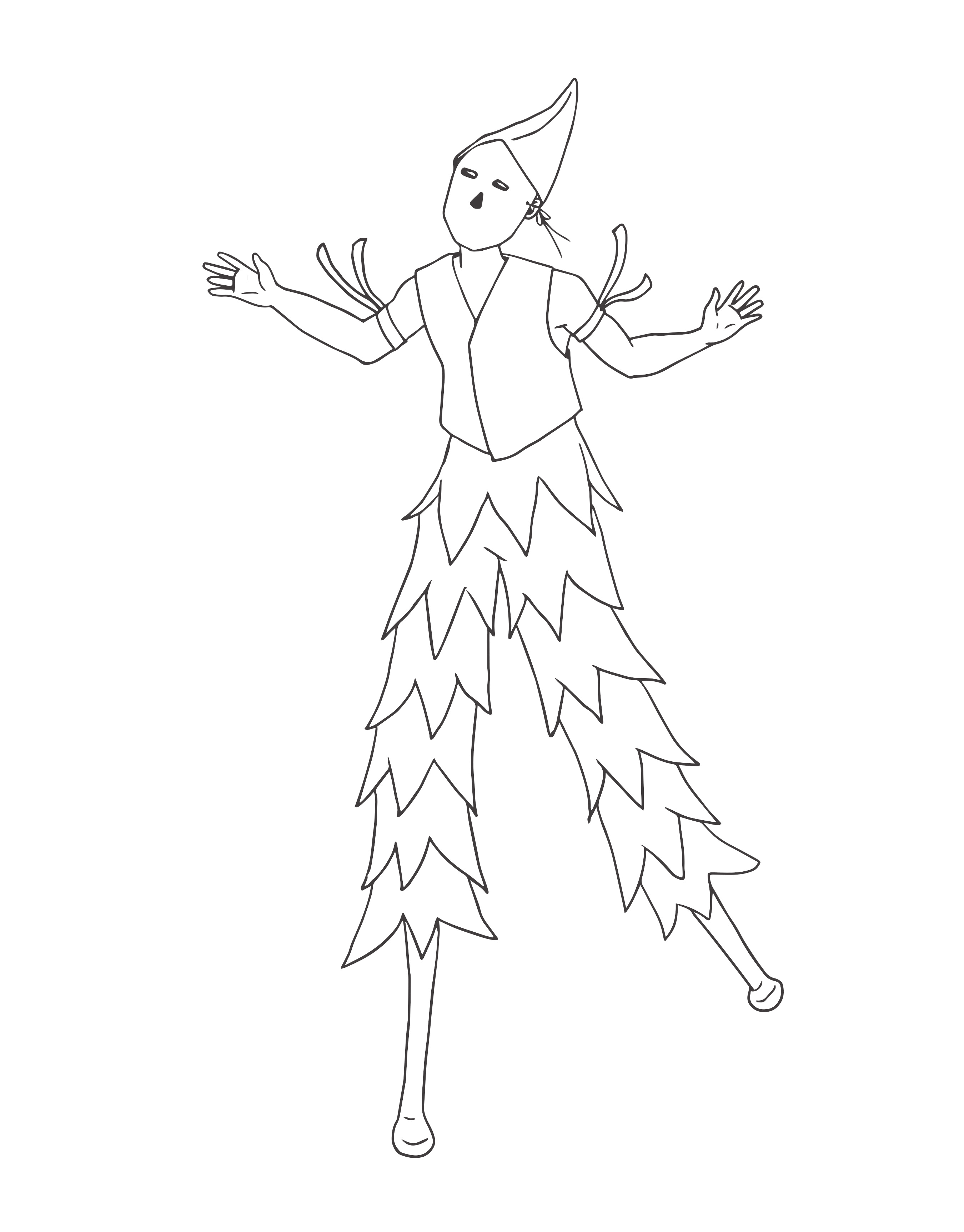
In days of old, the stiltman was a man who would walk and dance on wooden poles, called stilts. He also wore a mask and a cone- shaped hat. As in West African traditions, the stiltman was thought to be an elevated spirit whose duty it was to protect the village from evil. Over the years he lost his mask, and his stilts have grown in some cases to almost 17 feet! In Trinidad and Tobago he is known as a Mokojumbie
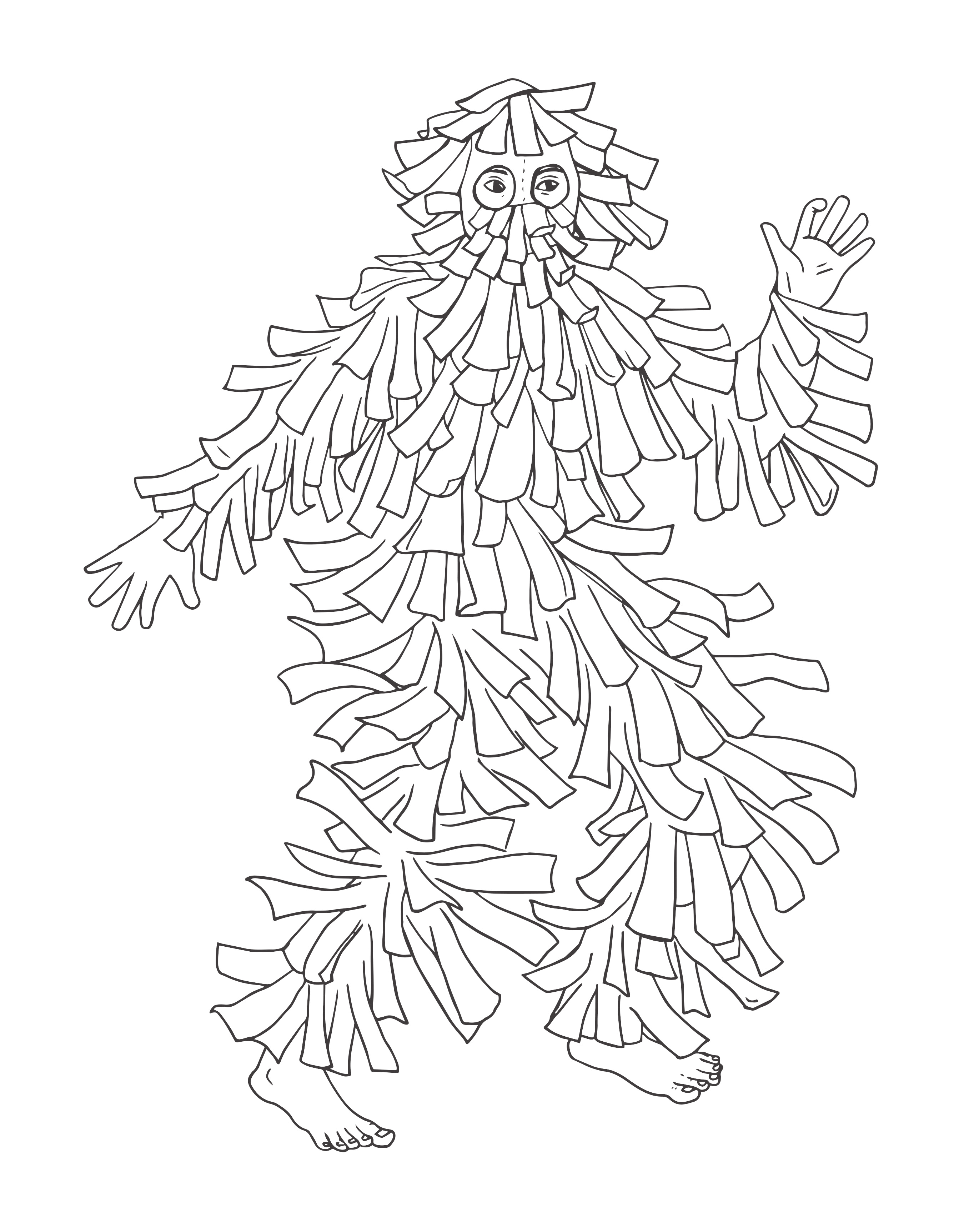
The shaggy bear used to rustle loudly as he danced, shook, twirled and whirled to the rhythms of the tuk band. Do you know why you could hear him? It’s because his costume used to be made from dried banana leaves! Today we know the shaggy bear by his agile antics and his gaily coloured costumes, which are now made from strips of cloth.
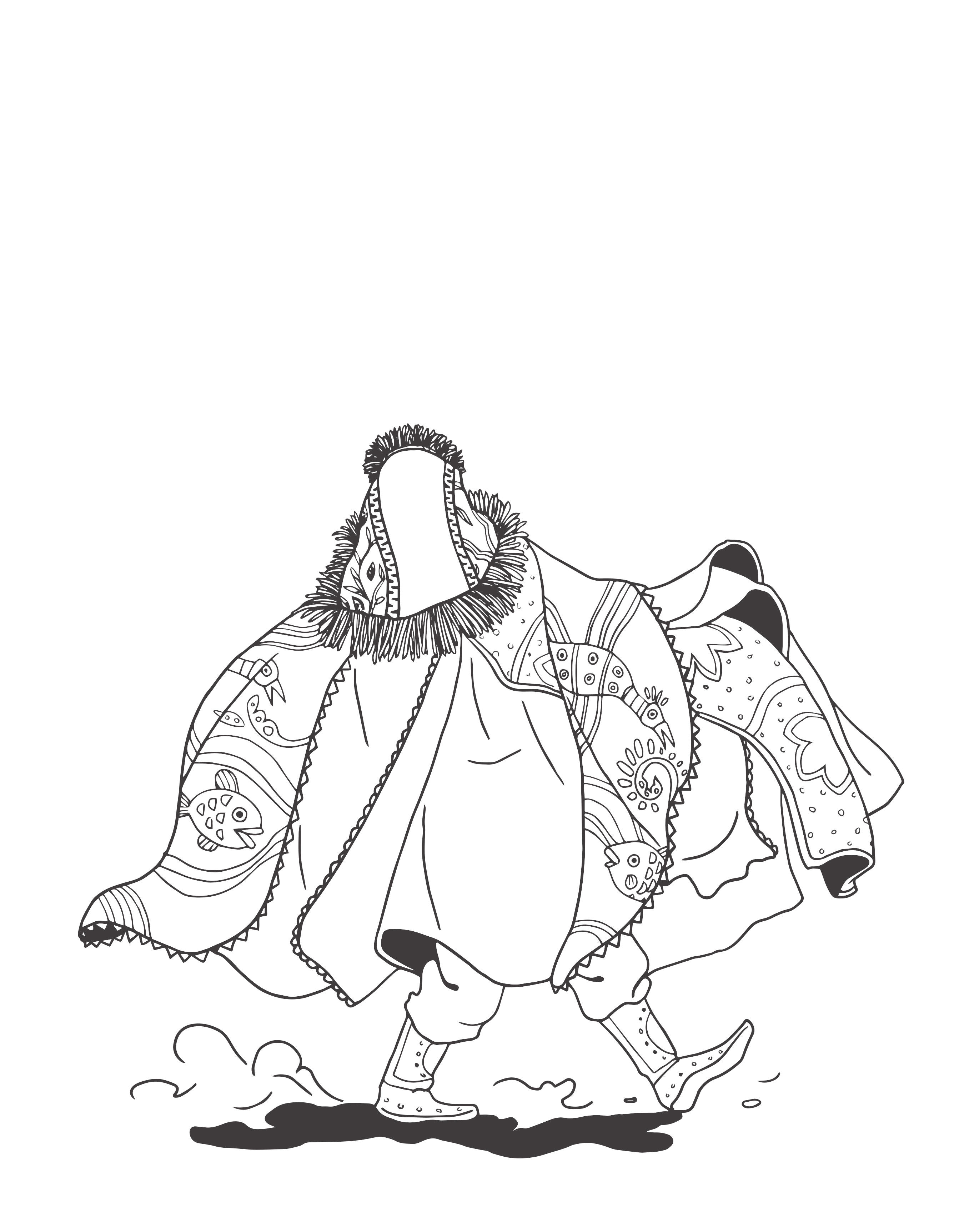
All of Barbados’ traditional costumed characters can be traced to the rich cultural and masquerade traditions of Africa. The shaggy bear resembles the masked Egungun (pronounced "ee-goon-goon") figure of ancestral worship in West African societies.
Do an Internet search for Egungun and see what you find.
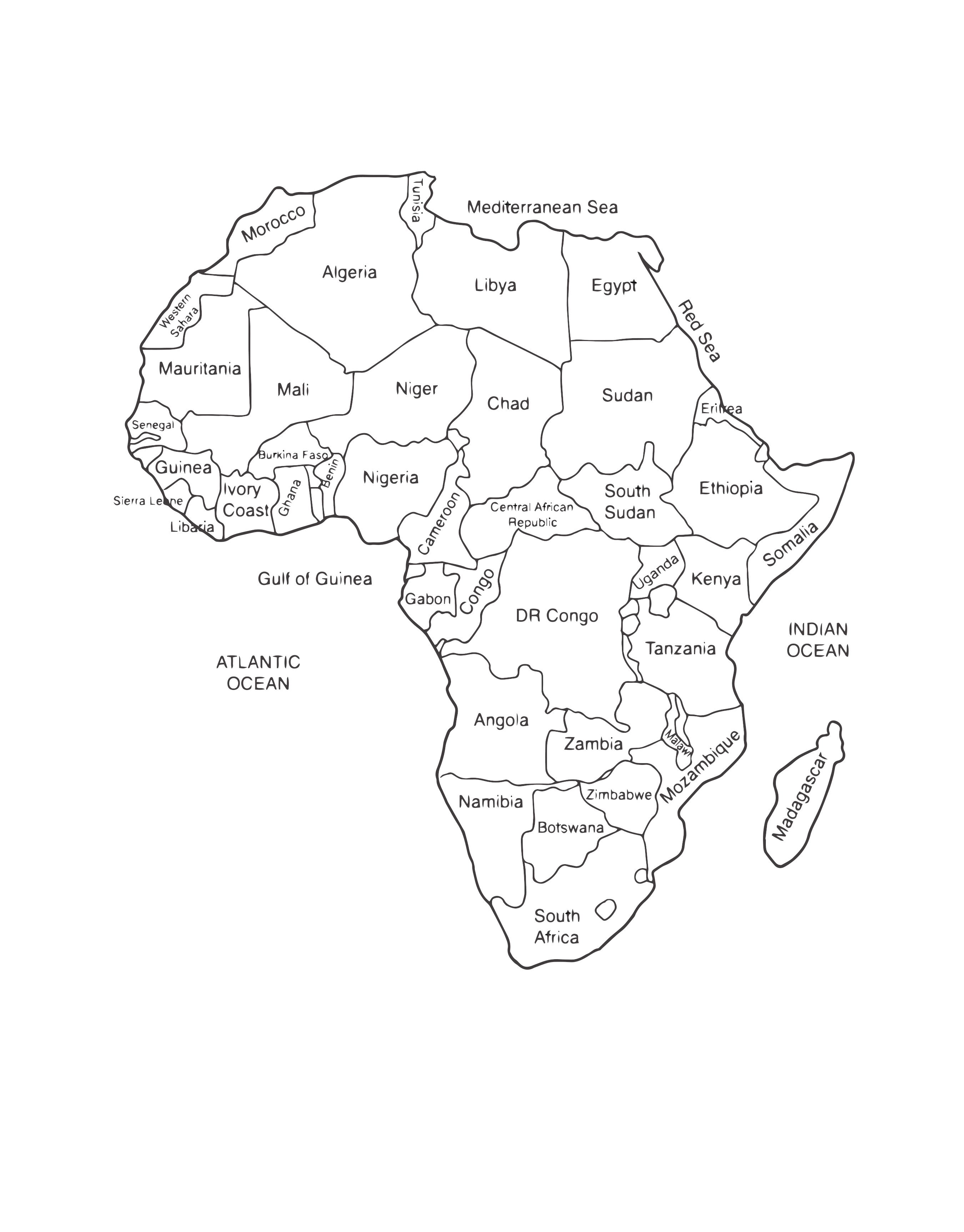
Most of our masquerade traditions came from our African ancestors, many of whom are believed to have originated from the Igbo and Akan peoples of West Africa. They came from Ghana, South Central & South Eastern Nigeria, Cameroon and Guinea. Colour these areas or countries green.
Did you know? Igbo is pronounced “eebo.”

In the past, the folk characters always accompanied the tuk band. They were popular around Crop Over time on the plantation as well as on bank holidays and Christmas. Colour them and watch them come alive.
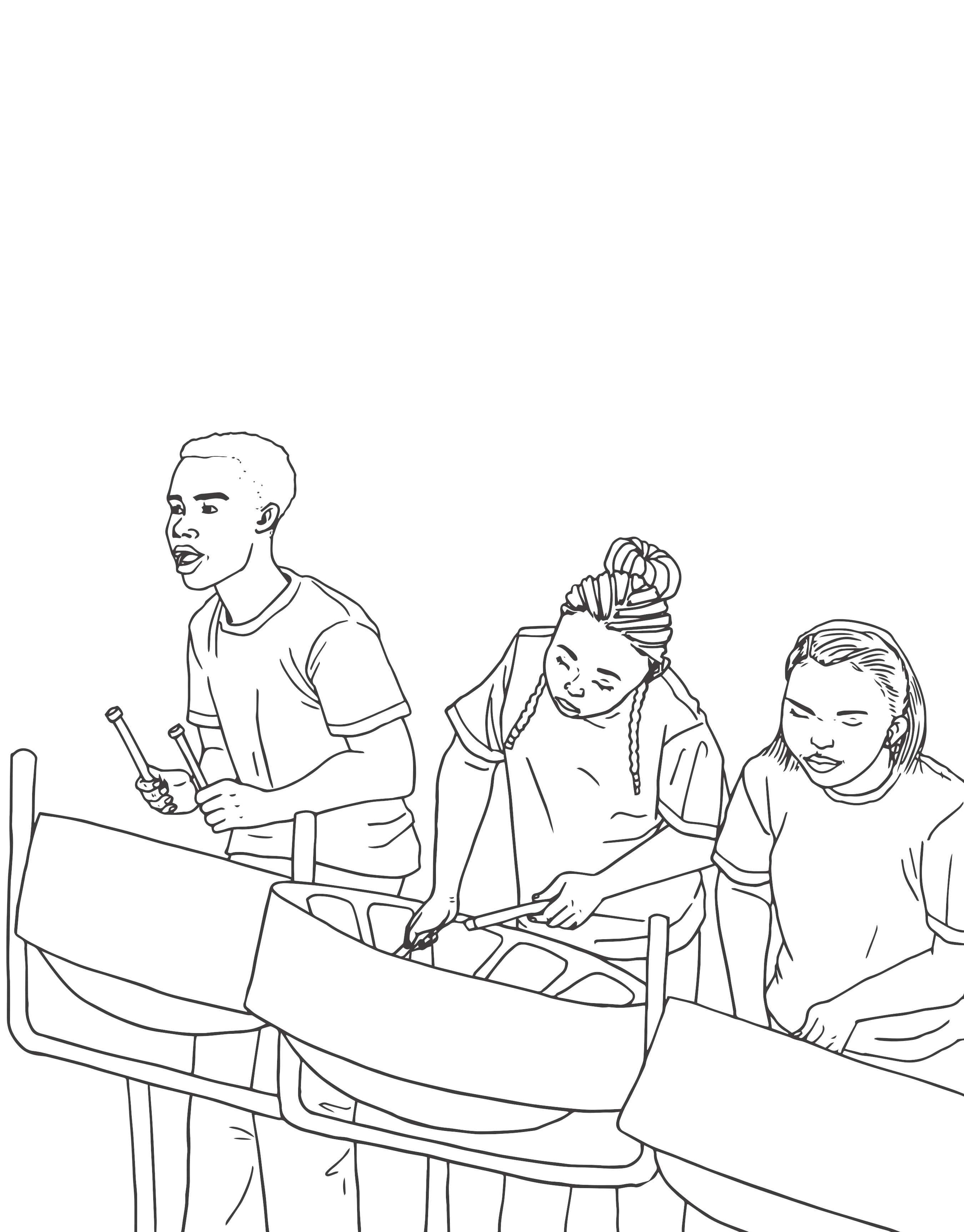
Did you know that the steel pan was invented by our neighbours in Trinidad and Tobago in the 1930s and 1940s? Children play steel pan too! Ask your teacher or parent about groups in your community
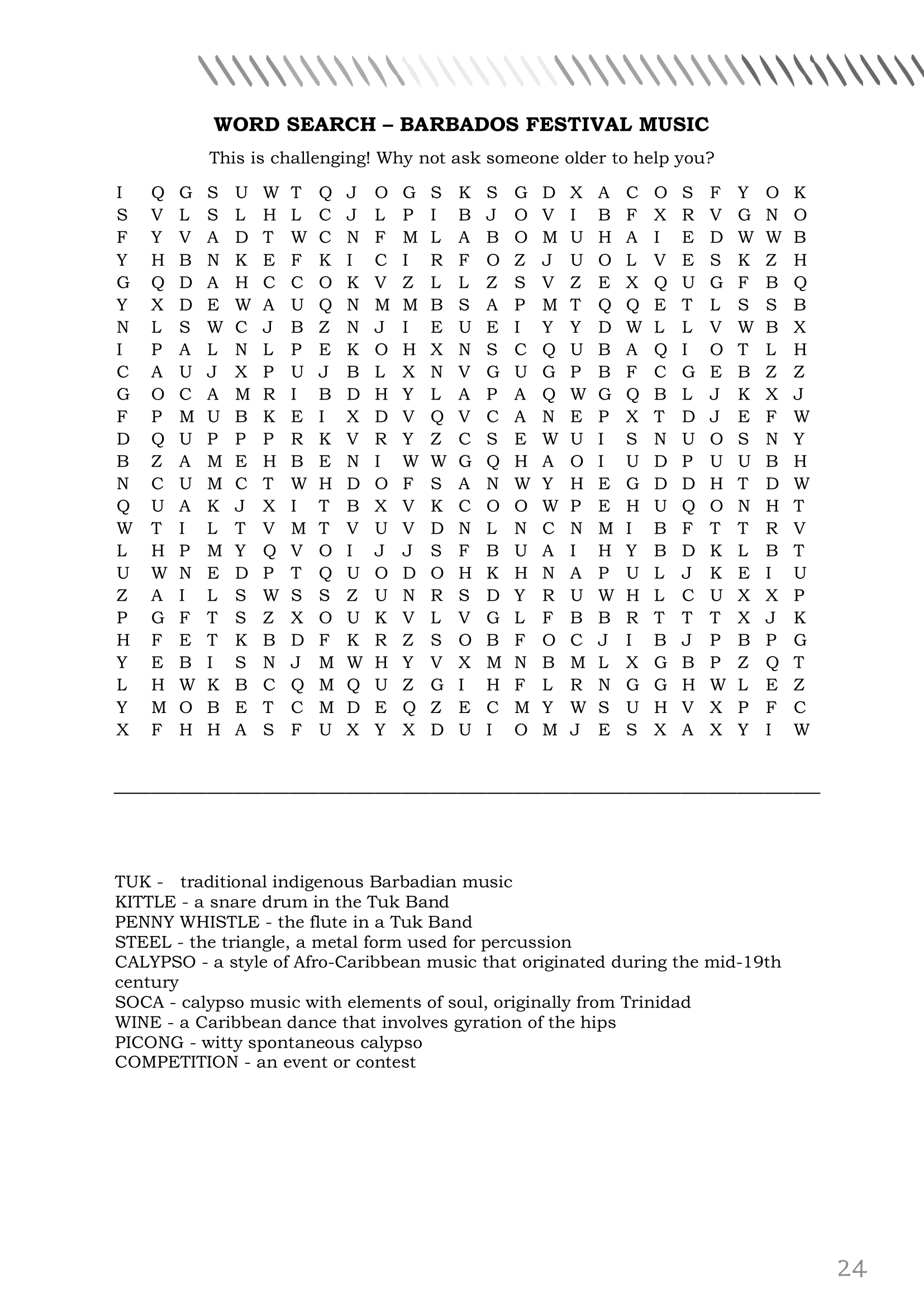
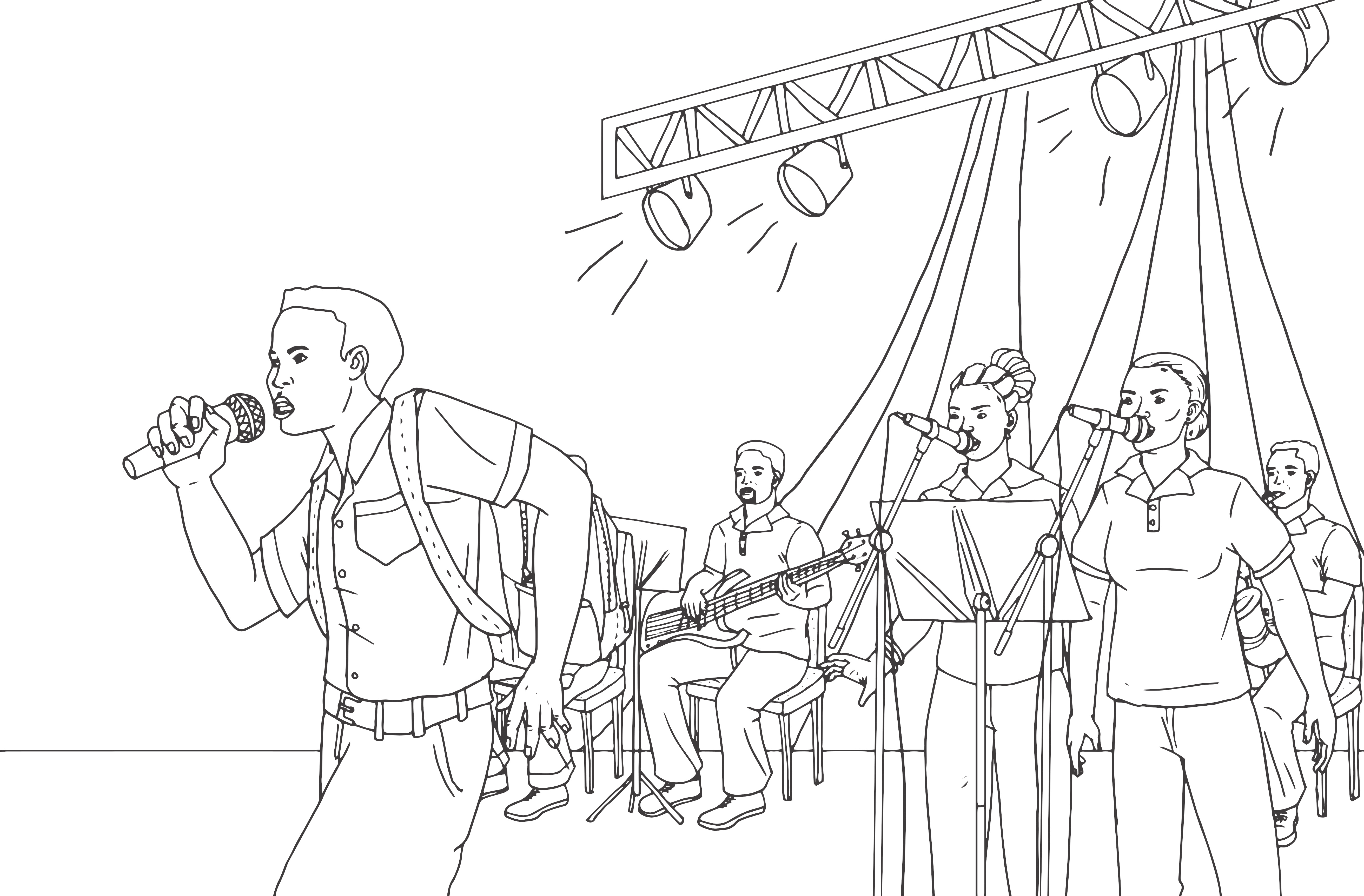
This competition has been part of the Crop Over calendar since 1986. It was jointly staged with Junior Kadooment in the past.

Kiddies’ Kadooment was introduced to Barbados by the Trinidad Women’s Club in the 1970s. It was held on the grounds of Culloden Farm, then the official residence of the Prime Minister. Today we know it as Junior Kadooment. Do you see Barbados’ national flag in the drawing? Do you know the colours and what they represent? Ask your teacher or a grown-up to help.
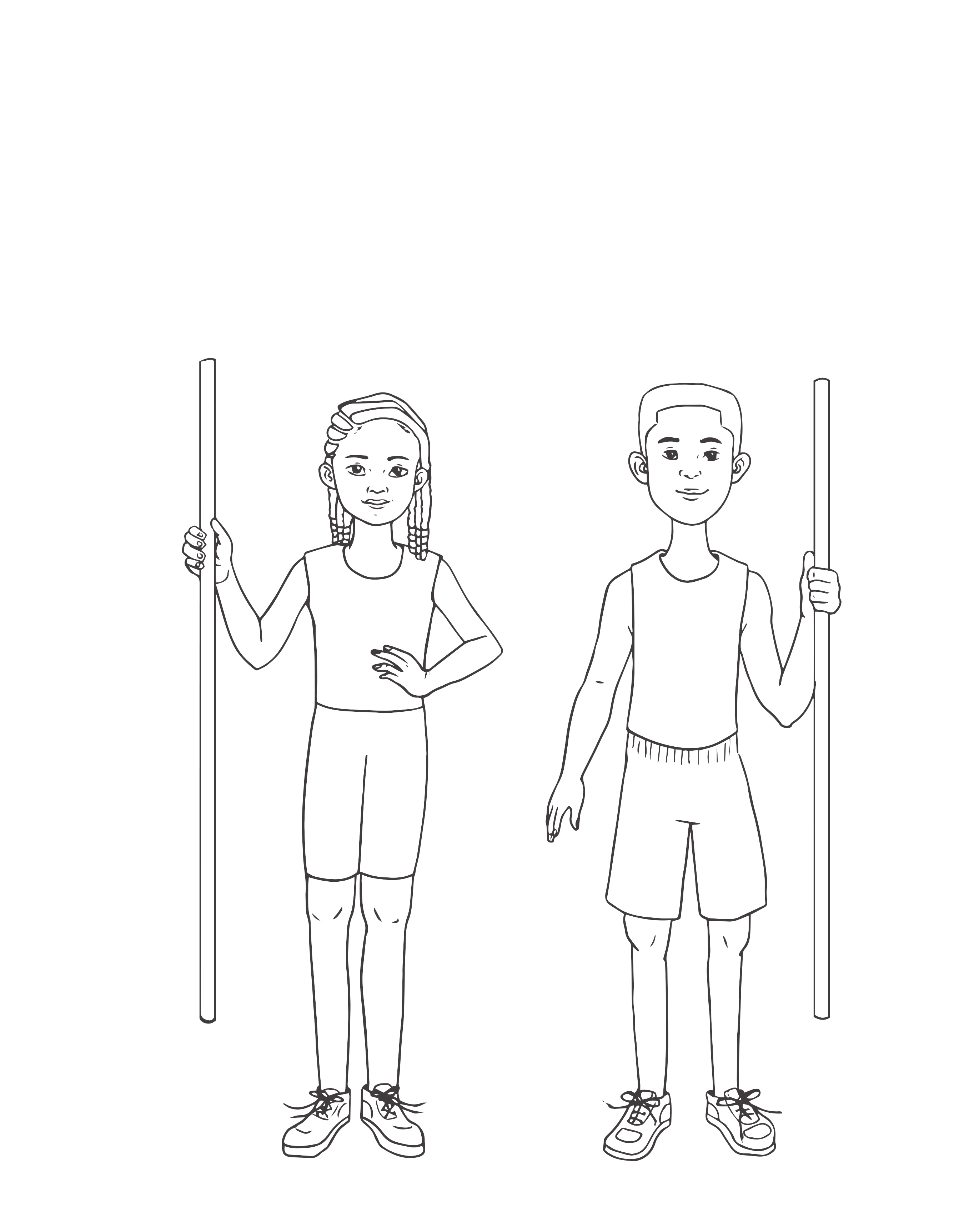
Colour the figures below. Do you want to dress them up for Junior Kadooment? Costumes are on the following page.
